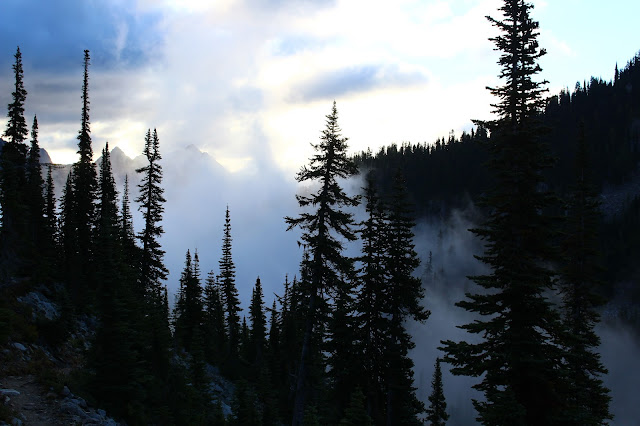RT Stats: 14 miles, 4550 ft vertical gain, 11 hours (5 hours trailhead to summit; 45 minutes for route finding)
Early morning mist
Frost at Heather Pass
Colors starting to change at Lewis Lake
Looking back at Lewis Lake from just below Wing Lake
Clouds clearing ... kinda ... sorta ... not really
The peak was socked in for most of the approach. Looking up toward the col.
Looking back during a moment of clarity
The final scramble up to the col, just right of the snow
I got off-route and climbed up some slightly sketchy 4th class rock here.
"This is really going to suck coming down," is probably not the best thought to be having repeatedly when solo and climbing on shitty, wet rock.
First dusting of snow in the North Cascades
Looking back at the route up from the col from just below the summit.
Lewis Lake and Wing Lake from the summit


















